Locating junctions at an early stage is important not only for learning to drive and the driving test, but is essential for safe driving throughout your life.
If you locate a left or right turn junction with very little time to deal with it safely, simply carry on in the direction you are already traveling – this includes on the driving test. Making the turn with too little notice is hazardous for other road users and it doesn’t provide you enough time for adequate observations.
T-junctions can be much more hazardous however as you may have no choice but to stop. There are certain things that aid in you detecting a junction up ahead, and of course some of these are junction signs. This tutorial provides the various types of junction signs you are likely to see whilst driving.
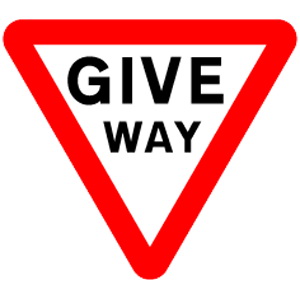
Give way sign
Give way signs are the most common signs warning that a junction is ahead. They can vary from the actual distance from the junction and can on occasions be obscured by foliage or buildings. Give way road markings are often used in conjunction with the signs. See give way road signs and road markings for further information.
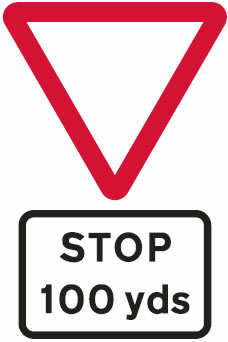
Stop line 100 yards junction sign
Stop lines are put in place due to junctions being dangerous and potentially hazardous. These junctions are usually ‘ closed’ (see junctions for an explanation on open and closed junctions) and difficult to see approaching traffic. The 100 yards warning provides plenty of time to prepare. You must stop by law at a stop sign and a stop line. See stop road signs for further information on the rules and laws that must be followed at stop signs.
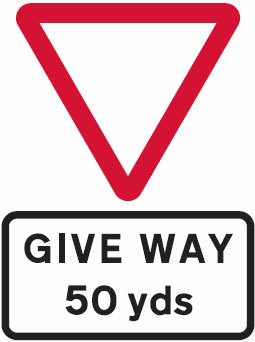
Give way 50 yards junction sign
These signs are used to warn drivers of a junction 50 yards ahead. The 50 yard warning sign is used when the junction is particularly hazardous. The junction may for instance be located on a bend where it may be unexpected to the motorist.
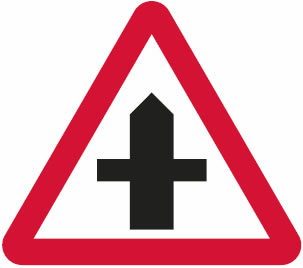
Crossroads sign
A crossroads is a form of junction that can provide an intersection of two or more roads. See crossroad junctions for information regarding how crossroads work.
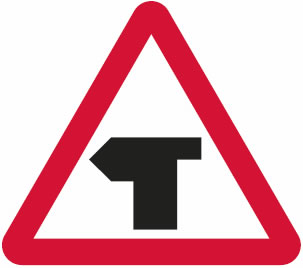
T-junction sign
The T-junction sign is often placed in busy areas to provide motorists a visual aid in detecting the T-junction ahead and at night due to its reflective surface.
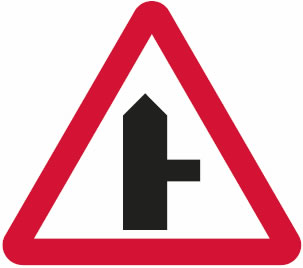
Side road sign
Left and right turns are easier to prepare for when they have a side road sign before them. If however during a driving test the examiner asks you to take a particular left or right turn and you reach it with very little time to prepare, continue on your current direction and they will take you on an alternative route.
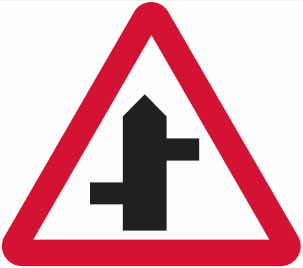
Staggered junction sign
Warning sign telling motorists of a staggered junction or crossroads at either side of the road. See Staggered junction for further information.
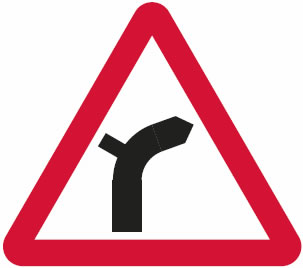
Junction on bend sign
Junctions on bends can be hazardous due the vehicles exiting the minor road junction often having little or limited observation of approaching vehicles when joining the major road. Caution must be used whilst navigating the bend for vehicles entering or crossing your road from the minor road.
TUTORIALS AND GUIDES RELATED TO JUNCTIONS
- Types of junctions
- Turning left at a junction
- Turning right at a junction
- Box junction
- Staggered junction
- Y Junctions
- D Junctions
- Junction lines
- Road junctions
- Emerging from a junction
- Creep and peep

That’s good 😊😊😊🙂 and very interesting I love that 😇♥️👍🌈 I would like it if you continue
doing and acting like this